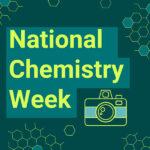
Sharing ideas and inspiration for engagement, inclusion, and excellence in STEM

In today’s classrooms, you’ll see an emphasis on science, technology, engineering, and math (STEM). Educators and administrators are having discussions about how to prepare their students and ensure they have the skills to be successful in our technology-driven world. There’s no denying that technology has changed the workforce and classroom. A report from the Institute for the Future and Dell Technologies estimates that 85% of the jobs that today’s students will be doing in 2030 haven’t been created yet. Currently, 20% of U.S. jobs require significant STEM knowledge and skills, according to STEMconnector. While students are still in the classroom, it’s important that they’re provided the opportunity to learn the skills they need for the growing and changing demands of the future.

Incorporating STEM in the 4 Cs
The four Cs of 21st Century Skills have been making their way through classrooms as the key pillars that students must know how to do in order to be successful in today’s workforce. It’s especially important that students engage in activities that require skills they may need for jobs in the local workforce.

1. Critical Thinking
You can promote critical thinking by presenting a science problem to your students, such as a phase change of a substance. Ask them to predict the temperature change during the phase change and to explain why they made that prediction. By having students observe a scenario and predict the outcome, they can form hypotheses about what they think will happen based on prior knowledge. Using data-collection technology, students can collect and analyze data to test their hypotheses and plan their next steps.

2. Creativity
Encourage students to think differently. First, ask students questions about science phenomena and discover what prior knowledge they already have. Ask them to apply that prior knowledge to a different reaction or phenomena and test their ideas. With data collection, students can use their creativity in a more efficient way. They can gather data quickly and repeatedly in order to compare the data and test their ideas.

3. Collaboration
These days it is rare for individuals to work alone, whether it’s in school or in their future careers. Science labs and experiments are a perfect opportunity to have students work together in groups to solve a problem. Assign roles within a group, or have the group determine how they’d like to solve an experiment. Foster a collaborative environment and encourage students to learn skills from others to help them complete the task at hand.

4. Communication
Create opportunities for students to present their findings to the class. Have them clearly communicate what they thought would happen, the steps they took during their investigations, and what they discovered, along with the data to back up their findings.
Vernier provides sensors, software and activities that engage students in scientific exploration as well as engineering challenges that can be part of that student preparation for the future. The learn more about products and activities for your subject area, visit us here.
Share this Article

Sign up for our newsletter
Stay in the loop! Beyond Measure delivers monthly updates on the latest news, ideas, and STEM resources from Vernier.






